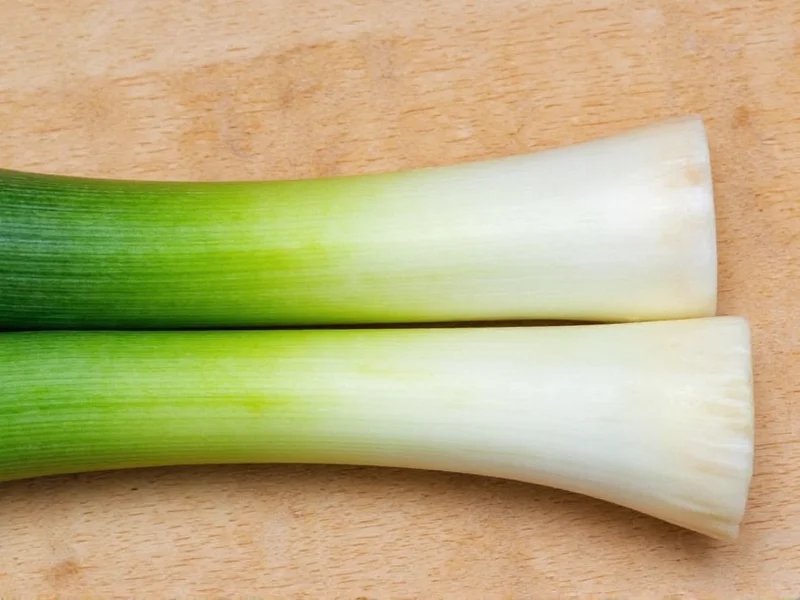Why Proper Leek Cutting Technique Matters for Soup
Leeks require special preparation compared to other alliums because of the dirt trapped between their layers. When making soup, improperly cleaned or unevenly cut leeks can ruin your dish with gritty texture or inconsistent flavor distribution. The white and light green portions offer the perfect balance of flavor and tenderness for soups, while the dark green sections are too fibrous for most soup applications.
Essential Tools for Cutting Leeks
You don't need specialized equipment for proper leek preparation. Gather these basic kitchen items:
| Tool | Purpose |
|---|---|
| Sharp chef's knife | Ensures clean cuts without crushing leek fibers |
| Large cutting board | Provides stable surface for safe preparation |
| Large bowl of cold water | For thorough leek cleaning |
| Colander | Drains cleaned leek pieces effectively |
Step-by-Step Guide to Cutting Leeks for Soup
Preparing the Leek
Start by removing the root end with a single downward knife motion, leaving about ¼ inch to maintain structural integrity during cleaning. Trim off the dark green tops where the color transitions from light to dark green—these tough sections work better for stock than direct soup inclusion. For the proper way to cut leeks for soup, preserving the white and pale green portions is essential.
Cleaning Leeks Thoroughly
This critical step addresses the common problem of how to prevent dirt in leek soup. Slice the leek in half lengthwise from top to bottom. Submerge both halves in a large bowl of cold water, fanning the layers to release trapped soil. Swish gently and let sit for 2-3 minutes—dirt sinks while clean leeks float. Transfer to a colander, avoiding the sediment at the bottom.
Slicing Technique for Soup Applications
Place cleaned leek halves flat-side down on your cutting board. For most creamy soups like potato leek, cut crosswise into ¼-inch half-moons. The uniform size ensures even cooking—thinner slices (⅛-inch) work better for delicate bisques, while heartier vegetable soups can handle slightly thicker cuts (½-inch). Never skip the thorough rinsing step when learning how to clean leeks before cutting for soup.
Special Considerations for Different Soups
French vichyssoise requires very fine slices that melt into the soup, while rustic vegetable soups benefit from slightly larger pieces that maintain texture. For clear broths, slice leeks thinner to prevent overwhelming the delicate broth. When making potato leek soup, many chefs reserve some of the light green parts for garnish, finely shredded for color contrast without compromising texture.
Common Leek Cutting Mistakes to Avoid
Many home cooks make these errors when preparing leeks for soup:
- Skipping the split-and-soak method—leads to gritty soup
- Using the entire leek—dark green parts make soup bitter and stringy
- Inconsistent sizing—causes uneven cooking and texture issues
- Drying leeks completely—slightly damp leeks prevent sticking during cooking
Understanding white vs green leek parts for soup prevents wasted ingredients and improves flavor balance. The white portion offers stronger onion-like flavor, while the light green provides milder taste and beautiful color.
Storing Cut Leeks for Future Soup Making
If you've cut more leeks than needed, store them properly to maintain freshness. Place cleaned, sliced leeks in an airtight container lined with a slightly damp paper towel. Refrigerate for up to 3 days. For longer storage, blanch slices in boiling water for 90 seconds, then freeze in portion-sized bags—ideal for quick soup preparation later. Never store uncleaned cut leeks, as moisture accelerates spoilage.











 浙公网安备
33010002000092号
浙公网安备
33010002000092号 浙B2-20120091-4
浙B2-20120091-4